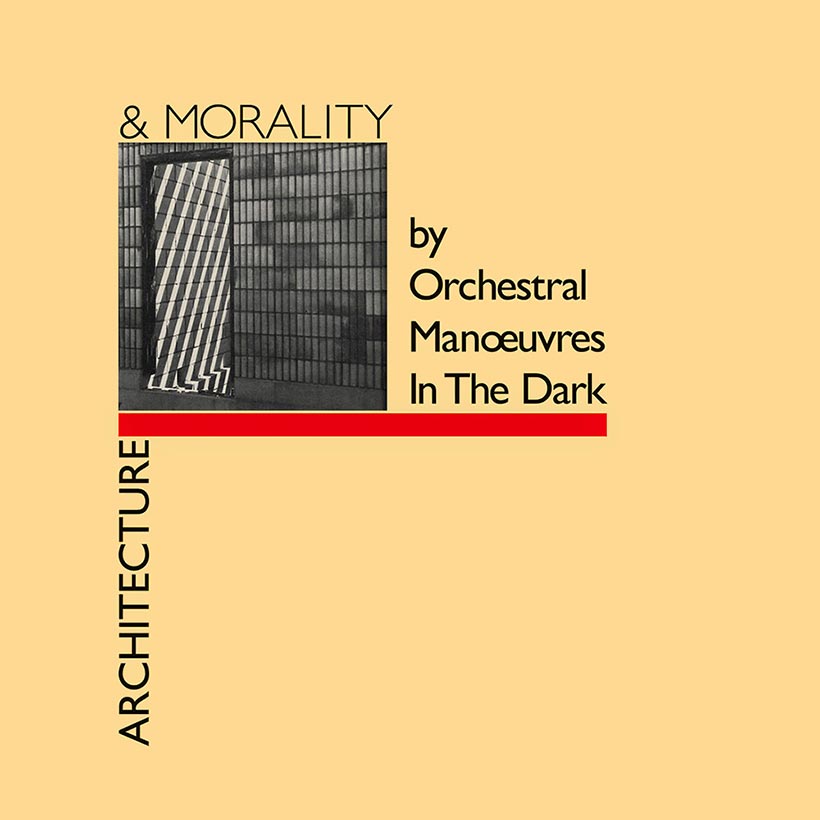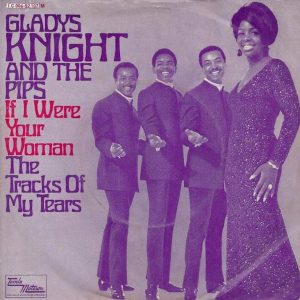Widely regarded as their masterpiece, Orchestral Manoeuvres In The Dark’s seminal third album, Architecture & Morality, marked one of those rare occasions when creative and commercial concerns aligned to perfection. First released on November 8, 1981, the record sold over four million copies and was hailed by British publication The Morning Star as “the blueprint for synth-pop”, but its timeless appeal stemmed from OMD’s restless desire to meet fresh sonic challenges head-on.
Listen to Architecture & Morality on Apple Music and Spotify.
“We’ve always tried to change direction”
“With every album we’ve made, we’ve always tried to change direction,” OMD’s bassist/vocalist Andy McCluskey tells uDiscover Music. “Our debut was basically synth-punk in a garage. Organisation was more dark and intense, whereas Architecture & Morality was much more ambient and ethereal.”
The catalyst for the album’s overall sound was its lead single, “Souvenir.” Unlike OMD’s previous hit, “Enola Gay,” which was primarily McCluskey’s brainchild, “Souvenir” was written and sung by keyboard player Paul Humphreys, with input from OMD’s former touring keyboardist Dave Hughes.
Another versatile, Wirral-based musician, Hughes was also involved with Liverpool electronic outfit Dalek, I Love You, but his contribution to “Souvenir” sprang from his overseeing the recording of a local choir in Liverpool’s Amazon Studios.
“Dave asked if we could make loops of the choir singing single notes on our tape machine, and, if we could, he’d let us have a copy of all this choral singing,” Humphreys recalls. “We spent the whole day looping these notes and it meant we had all this choral music at our disposal.”
Humphreys built chords from these home-made choral samples by pushing faders up and down the desk in OMD’s studio, The Gramophone Suite. This added a beguiling extra dimension to “Souvenir”’s sumptuous pop melodies and led to OMD acquiring an instrument which would shape Architecture & Morality’s overall sound.
“Andy loved the choral sounds on ‘Souvenir,’ so we bought a Mellotron, which effectively gave us choirs at our fingertips,” Humphreys reveals. “It greatly enhanced the palette of sounds we could choose from when we made the album.”
“It has this dark, orchestral beauty all its own”
In effect using the same concept as modern samplers – except that it generated sounds using analog samples recorded on audio tape, rather than digital samples – the Mellotron was a singular keyboard which first made its mark on rock and pop in the mid-60s. The Beatles famously employed one on “Strawberry Fields Forever,” while Brian Jones’ use of Mellotron enhanced classic Rolling Stones tracks such as “We Love You” and “2,000 Light Years From Home.”
On Architecture & Morality, however, OMD’s newly-acquired Mellotron helped shape key tracks such as “Georgia,” the melancholic “She’s Leaving” and the glorious ambient drift of the epic, seven-minute “Sealand.”
“The whole album was really the result of exploring what the Mellotron could do,” Humphreys enthuses. “There isn’t one song that isn’t laden with it. Even the famous bagpipe sound on ‘Joan Of Arc (Maid Of Orleans)’ is actually a violin sound treated through the Mellotron. It gives the record this dark, orchestral beauty all its own.”
With Organisation’s “Enola Gay” – named after the US fighter plane that dropped the atomic bomb on Hiroshima in August 1945 – Andy McCluskey had already proved he could craft rousing hit records from seemingly arcane subject matter. However, the 15th-century Roman Catholic saint Joan Of Arc (who was burnt at the stake during Europe’s Hundred Years’ War) would inspire the OMD frontman to write not just one, but two Top 10 hits.
“I was a bit of an anorak”
“We toured France in the spring of 1981, and the French support band was telling us all about Joan Of Arc because the tour visited all these places associated with her, like Rouen and Orleans,” McCluskey explains.
“I was a history buff and a bit of an anorak, so all of this really lodged in my brain. Soon after, I went to the library, got some books, and started making notes.”
McCluskey wrote the compelling “Joan Of Arc” on the 550th anniversary of her death (May 30, 1981), but OMD didn’t complete what became “Joan Of Arc (Maid Of Orleans)” until the band moved down to Virgin’s studio, The Manor, in Oxfordshire, to complete Architecture & Morality. Another unlikely influence – McCluskey’s love of his mother’s Edinburgh military marching-band album – provided the final piece of the puzzle.
“I remember [OMD drummer] Malcolm Holmes was really keen on ‘Maid Of Orleans’ and he asked if he could have a go at replacing the drum machine with real military drumming when we got down to The Manor,” McCluskey says.
“His instincts were dead right. That big, booming bass drum and his heavily-reverbed snare drum made the track come alive. It was perfect – just what the song needed.”
Both songs followed “Souvenir” into the Top 10 of the UK singles chart. The evocative “Joan Of Arc” peaked at No. 5, while the stately “Joan Of Arc (Maid Of Orleans)” – which was renamed “Maid Of Orleans (The Waltz Joan Of Arc)” to avoid confusion – climbed to No. 4. It also topped the German singles chart and became Germany’s best-selling single of 1982.
“It’s my favorite OMD album”
Collectively, “Souvenir,” “Joan Of Arc,” and “Maid Of Orleans” sold eight million copies worldwide. When Architecture & Morality was issued in a striking die-cut sleeve designed by Peter Saville and Brett Wickens, it very quickly caught on, peaking at No. 3 on the UK Top 40 and eventually moving over four million copies globally.
The critics, too, were in raptures. UK weekly Melody Maker dubbed the record “the first true masterpiece of the 80s” in 1983 and its reputation has grown ever since, with critiques such as Q’s 2003 retrospective (“A perfect balance of the avant-garde with top-flight songwriting”) typical of the 21st-century retrospectives.
As for OMD, they freely admit that they blueprinted something built to last when they designed Architecture & Morality.
“It’s still my favorite OMD album,” Paul Humphreys says with passion. “Creatively, it was the pinnacle of that early era for us and I think the record still hangs together really well. I think the whole vibe of Architecture & Morality is just so beautiful.”
This article was first published in 2019. We are republishing it today in celebration of the album’s release date anniversary. OMD’s career-spanning 5CD+2DVD box set, Souvenir can be bought here.




